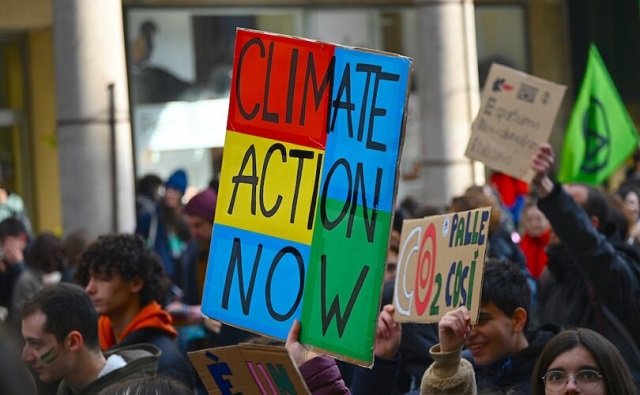Business
Business investment key to addressing Canada’s productivity crisis

From the Fraser Institute
By Tegan Hill
The Bank of Canada’s senior deputy governor Carolyn Rogers recently raised the alarm on Canada’s productivity crisis, saying “it’s an emergency—it’s time to break the glass.” But to address Canada’s productivity problem, which is contributing to our stagnant living standards, we must first address Canada’s weak business investment.
For perspective, Canada’s economic growth in the fourth quarter of 2023, as measured by per-person GDP, a common indicator of living standards, was $58,111, which is slightly less than it was at the end of 2014 at $58,162 (after adjusting for inflation). That means that over roughly the last decade, Canadian living standards have not increased. Indeed, our economic problems span well beyond the pandemic. In the five years prior to 2019 (the last pre-COVID year), Canada’s per-person GDP (inflation-adjusted) was the 4th weakest out of 38 advanced countries.
Unfortunately, prospects for the future are dim. According to the OECD, Canada will record the lowest rate of per-person GDP growth among 32 advanced economies over roughly the next 40 years. Countries such as Estonia, South Korea and New Zealand are expected to pass Canada and achieve higher living standards by 2060.
Given that growth in productivity—essentially, the value of economic output per hour of work—is key to higher living standards, it’s no surprise that Rogers and other analysts are raising alarms. But what’s at the heart of our productivity crisis?
Put simply, weak business investment. While the federal and many provincial governments have prioritized immigration and bigger government in an effort to stimulate productivity growth and grow our economy, they’ve ignored business investment, which has significantly declined in recent years.
From 2014 to 2022, inflation-adjusted total business investment (in plants, machinery, equipment and new technologies but excluding residential construction) in Canada declined by C$34 billion. During the same time period, after adjusting for inflation, business investment per worker declined (on average) by 2.3 per cent annually. In contrast, business investment per worker grew (on average) by 2.8 per cent annually from 2000 to 2014.
While business investment has generally declined in Canada since 2014, in other countries, including the United States, it’s continued to grow. As a result, Canada’s GDP per hour worked—a key measure of productivity growth—is among the lowest in the OECD.
Think of it this way; when businesses invest in physical and intellectual capital they equip workers with the tools and technology (e.g. machinery, computer programs, artificial intelligence) to produce more and provide higher quality goods and services, which fuels innovation and higher productivity. Because Canada has lower levels of investment in tools and technology, our workers are less productive.
But here’s the good news. Governments across Canada can enact policies to help stimulate business investment, productivity gains, and ultimately, stronger economic growth. The key is to reduce onerous regulations, rein in high government spending, and create a pro-growth tax environment that makes Canada a more attractive place for business to locate and invest. These policies have a proven track record of improving business investment in Canada. For its part, the Trudeau government can prioritize pro-growth policies when it tables the federal budget next week.
Clearly, without a change in the investment climate and stronger productivity growth, the economic outlook looks grim. Fortunately, Canadian governments can respond to this emergency with pro-growth policy reform.
Author:
Business
Parliamentary Budget Officer forecasts bigger deficits for years to come

From the Canadian Taxpayers Federation
Author: Franco Terrazzano
“Every penny collected from the GST will now go to cover interest charges on the Trudeau government’s credit card”
The Canadian Taxpayers Federation is calling on the federal government to cut spending and balance the budget following today’s Parliamentary Budget Officer report forecasting higher deficits.
“Budget 2024 was bad, but the PBO report forecasts the Trudeau government will be running even bigger deficits,” said Franco Terrazzano, CTF Federal Director. “This PBO report should be a wake-up call for Prime Minister Justin Trudeau: get a hold of your spending or interest charges will keep ballooning.”
The PBO projects a $46-billion deficit this year. Budget 2024 projected a $40-billion deficit.
“PBO’s projected budgetary deficits are $5.3 billion higher annually, on average, over 2023-24 to 2028-29,” according to the report.
In Budget 2023, Finance Minister Chrystia Freeland said the government would find “savings of $15.4 billion over the next five years.”
However, “in Budget 2024, the government announced $61.2 billion in new spending,” according to the PBO. “Since Budget 2021, the government has announced a total of $251.6 billion in new spending measures.”
Interest charges on the debt are expected to cost taxpayers $54 billion this year, according to Budget 2024.
“Every penny collected from the GST will now go to cover interest charges on the Trudeau government’s credit card,” Terrazzano said. “Trudeau must balance the budget, cut spending and stop wasting more than $1 billion every week on interest charges.”
Automotive
Canadian interest in electric vehicles falls for second year in a row: survey

From LifeSiteNews
Canadians’ disinterest in electric vehicles comes as the Trudeau government recently mandated that all new light-duty vehicles in Canada are zero emission by 2035.
Research has revealed that Canadians are increasingly unwilling to purchase an electric vehicle (EV).
According to an April 22 survey from AutoTrader, Canadians remain skeptical of Prime Minister Justin Trudeau’s electric vehicle mandate and ongoing advertisement surrounding electric vehicles, as interest in owning one dropped for a second year in a row.
“Overall, while almost half of non-EV owners are open to buying an EV for their next vehicle, interest in EVs has declined for the second year in a row,” reported Tiffany Ding, director of insights and intelligence at AutoTrader.
In 2022, at least 68 percent of Canadians were interested in buying an electric vehicle. However, by 2023, the number declined to 56 percent. So far in 2024, there is even less interest, with only 46 percent saying they were open to purchasing one.
“AutoTrader data shows a direct correlation to gas prices and EV interest, and since gas prices have normalized from their peak in 2022, EV interest has also dropped,” a summary of the survey explained.
However, Canadians did show a slight increase of interest in hybrid vehicles, with 62 percent of those looking to purchase an electric vehicle saying they would look at a gas-electric hybrid, compared with 60 percent in 2023.
The survey also questioned Canadians regarding Trudeau’s Zero Emission Vehicle (ZEV) mandate, which requires all new light-duty vehicles in Canada are zero-emission by 2035, essentially banning the sale of new gasoline/diesel-only powered cars.
The mandate comes despite warnings that it would cause massive chaos by threatening to collapse the nation’s power grids.
“Over 75 percent of respondents are aware of the federal government’s ZEV mandate, which requires all new light-duty vehicles sold in Canada to be zero-emission by 2035,” the survey found.
However, the respondents revealed that they believe it’s “unlikely that Canada will be able to meet the federal government’s ZEV target due to the current inadequate charging infrastructure or a change in political power that could revoke or amend the ZEV mandate timeline.”
Canadians’ concerns in buying an electric vehicle include limited travel range/distance, inadequate availability of charging stations, higher purchasing costs, and concerns that they do not perform well in cold weather.
Indeed, this winter, western Canadians experienced firsthand the unreliability of Trudeau’s “renewable” energy scheme as Alberta’s power grid nearly collapsed due to a failure of wind and solar power.
Trudeau’s plan has been roundly condemned by Canadians, including Alberta Premier Danielle Smith. In 2022, Smith denounced a federal mandate that will require all new cars sold after 2035 to be “zero emission” electric (EVs) vehicles and promised that Albertans will always have the choice to buy gasoline-powered cars.
Since taking office in 2015, Trudeau has continued to push a radical environmental agenda similar to the agendas being pushed the World Economic Forum’s “Great Reset” and the United Nations’ “Sustainable Development Goals.”
The reduction and eventual elimination of the use of so-called “fossil fuels” and a transition to unreliable “green” energy has also been pushed by the World Economic Forum (WEF) – the globalist group behind the socialist “Great Reset” agenda – an organization in which Trudeau and some of his cabinet are involved.
The Trudeau government’s electric vehicle plan comes despite the fact Canada has the third largest oil reserves in the world. Electric cars cost thousands more to make and buy, are largely considered unsuitable for Canada’s climate as they offer poor range and long charging times during cold winters and have batteries that take tremendous resources to make and are difficult to recycle.
-

 Alberta2 days ago
Alberta2 days agoAlberta rejects unconstitutional cap on plastic production
-

 Business2 days ago
Business2 days agoUN plastics plans are unscientific and unrealistic
-

 Alberta2 days ago
Alberta2 days agoAlberta official reveals ‘almost all’ wildfires in province this year have been started by humans
-

 Opinion2 days ago
Opinion2 days agoThe Climate-Alarmist Movement Has A Big PR Problem On Its Hands
-

 Education2 days ago
Education2 days agoSupport a young reader through the Tim Hortons Smile Cookie campaign
-

 Automotive1 day ago
Automotive1 day agoThe EV ‘Bloodbath’ Arrives Early
-

 Brownstone Institute1 day ago
Brownstone Institute1 day agoThe Numbers Favour Our Side
-

 Fraser Institute1 day ago
Fraser Institute1 day agoFederal government’s fiscal record—one for the history books






